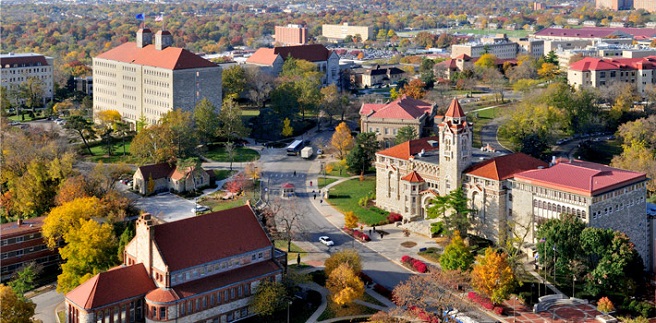What Fighting Sexual Assault Looks Like on My Campus

It’s no surprise to anyone even halfway paying attention to the news as of late that campus sexual assault is a buzzy topic right now. From the release of 55 universities under investigation by the federal government, to the viral picture of an alumni refusing to donate until their alma mater addresses sexual assault, to college students posting a rapist list of students who were found guilty yet never charged—sexual assault on campuses is causing a huge national discussion. Much of this media attention is credited to the White House itself assembling a task force on sexual assault. In April, the White House released a report on how campuses can combat sexual assault. These guidelines, and the task force recommendations (as well as the reason the White House even assembled a task force in the first place) are due to the work of student activists. It’s students, the ones being hurt by the culture of systematic sexual violence, as well as the lack of institutional response to these assaults, that raised the noise in the first place that they were being hurt, and that they needed both justice and prevention.
And while a great deal of attention is being put upon how campuses have failed to bring justice for survivors, or punish rapists on college campuses, there is less focus on how we stop these assaults in the first place. With a focus only narrowly on imprisonment of those who have already committed assault, it risks being too much like carceral feminism, not actually addressing survivors’ needs, or solutions to stop assault from occurring in the first place. This is why I’ve been proud to be a part of the efforts on my own campus, the University of Kansas, to address sexual assault policies, as we’ve geared our work toward preventative measures.
This work has been coming out of primarily KU’s Title IX Roundtable, which was started by Student Body Vice President for 2013-2014, Emma Halling.
“As a feminist policy nerd, I had been following the renewal of the Violence Against Women Act, including the new Campus SaVE Act and knew that new campus requirements regarding sexual assault were going to be imposed on universities,” says Halling. “As a representative of the student voice as Student Body Vice President, I wanted to make sure that the SaVE Act’s implementation on our campus would be as engaging for students as possible to ensure its success in actually reducing sexual assault. If policies are to be successful, formation must generally include input from the targeted parties.”
Another student member of the Roundtable, Amanda Schulze, a former president of KU’s feminist student organization, Students United for Reproductive and Gender Equity, said of her reasoning for joining the roundtable: “I wanted to get involved with Title IX because I felt like our university wasn’t doing enough to curtail sexual assault on campus. Myself and my fellow students deserve better…in my opinion, and after talking to students working on this at other campuses, half the battle is getting administrators to listen and take our concerns seriously.”
In my experience, this is also the common refrain among students—that students, the ones hurt by rape culture on campuses, need to be involved in the process of fighting this culture. Luckily, through the Title IX Roundtable, which is made up almost half and half of administrators and students, that divide is being bridged at KU. In fact, the two main projects that came out of the Roundtable this year were both preventative measures, as well as student devised and led—putting charging stations in bars in Lawrence, where KU is located, and creating a series of PSA videos about sexual assault.
These two methods aren’t ones you’ll find in the White House report recommendations, but they are responses to what students themselves say fulfill a need in our community.
The cell phone charging stations are being paid through KU’s Student Senate safety fee money, as KU’s Student Senate holds the power to enact student fees, unique to many universities around the country. The safety fund was started years ago to help fund projects both on and off campus to address student safety. These cell phone charging stations are going to be placed in popular, primarily student frequented bars. Though the charging stations will technically be accessible to any patron of the bar, Student Senate will maintain ownership of these charging stations. The idea behind the charging stations actually came from a discussion of developing a student safety app for sexual assault.
“As a university and a community, we can offer as many sexual assault response hotlines and safety apps as we’d like to help students who need safe rides home or resources after having been assaulted,” Halling says. “However, if students’ phones are dead, it’s more or less the same as not having these resources at all.”
“I think charging stations just give back control to students for matters of their safety,” says Schulze. “We can provide limitless tools, but if they don’t have access to them, they’re useless. Besides knowledge, I think a cell phone is the single greatest tool to combat sexual assault.”
Technology as a key to prevention is a huge part of the way students are conceiving ways to prevent assault in their own community. Along these lines, the Roundtable is producing PSAs, which will be a series of four short videos. The videos will be broadcast at Hawk Week, KU’s welcome week for incoming students, on TV screens that are already placed around the union. They will also be shown before Student Union Activities events, such as film screenings.
These videos perhaps don’t seem at first to be a terribly novel idea for sexual assault prevention. They in fact are, however, because the scripts, filming, production, and acting for these PSAs are being done primarily by students. This means, that the PSAs reflect what is students themselves believe will most effectively reach out to their peers.
The scripts for these PSAs were worked out in improv sessions with KU”s Interactive Theatre Troupe, in order to work through situations that would speak to students. An important part of the production of these PSAs was the simple fact that many students don’t know that many of the situations of sexual violence they encounter are, in fact, sexual violence.
“I think one of the biggest problems we have, at least at KU, is that people don’t know what exactly is sexual assault,” Schulze says. “This is what we hope to combat with the PSAs. My hope is that these will stay with students as they engage in campus life and make them think twice about a decision.”
This was certainly emphasized in October of last year, when this article rocked KU’s campus, and led issues of sexual assault and consent to be discussed widely by the student population. I’ve discussed here how the individuals in the article had a skewed idea of consent, but the unfortunate part is that this is a mentality shared by many college students. This view is sustained because our cultural image of rape is still one that reflects a very small minority of sexual assault—that of a stranger jumping out of the bushes, grabbing a woman in the dark. It is an image of sexual assault that mirrors very few assaults that occur, but maintains a fierce grip on students’ minds and campus policies. The students working on the Title IX Roundtable hope these videos will break down that image of sexual assault for students.
“Having PSAs be student-produced makes it them more of a peer-accountability conversation on campus, rather than a ‘thou-shalt-not’ dictum, which never goes over well,” says Halling. “It’s one thing for an administrator to tell you ‘don’t do this!’ or ‘this is what our policy is.’ It’s quite another to see people you know, who are similar to you and your friends, say ‘sexual assault has happened to me, and I wish I had known about these resources at the time.’”

Age: 21 School: University of Kansas—Rock Chalk Jayhawk, y’all. Major: English, Women, Gender, & Sexuality Studies, and Russian Minor Hometown: Kansas City, Kansas Favorite writer: Oh god this is too …
More By This Author
